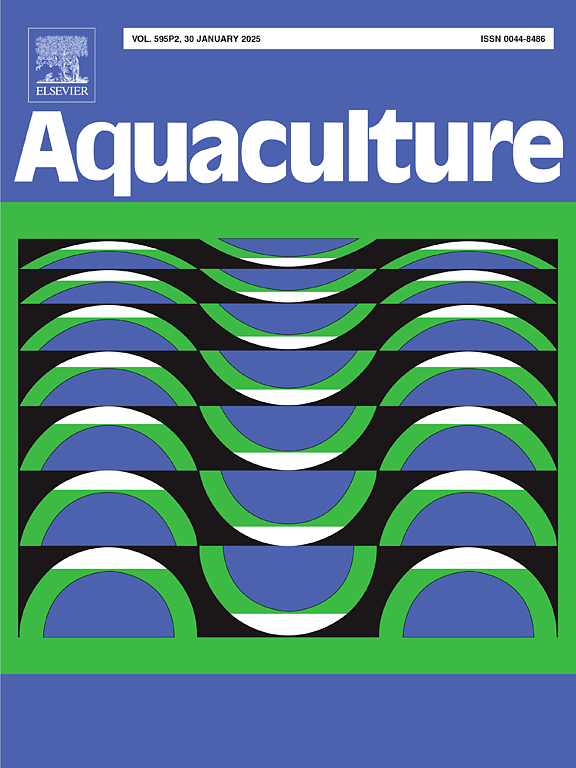Comparison of DPO-based PCR, RT-PCR and LAMP for the monitoring of WSSV and YHV in shrimp aquaculture
IF 3.9
1区 农林科学
Q1 FISHERIES
引用次数: 0
Abstract
The emergence of viral outbreaks in cultured crustaceans is estimated to have caused losses of more than 3 billion dollars over the past three decades. Despite the implementation of control measures as recommended by OIE, this serious threat to the aquaculture industry has not been successfully mitigated. To effectively address this issue, routine screening of shrimps using established molecular techniques is essential to prevent the spread of pathogens. In this work, Dual Priming Oligonucleotide (DPO)-based multiplex PCR was deployed to screen shrimp viruses (WSSV and YHV) from farm samples, validated with real time PCR as a comparative study. This improved molecular technique, which remains still scarce in aquaculture research, demonstrated higher sensitivity and selectivity than the conventional PCR due to its dual-priming system. Yet, molecular techniques still face many challenges such as longer running time, the inability to perform in-situ diagnostics, the requirement for technical expertise, strict laboratory confinement and high operational cost (including reagents and instruments). As an alternative, we developed a loop mediated isothermal amplification (LAMP) method for the detection of WSSV and YHV shrimp diseases, which has the potential to be integrated into a lab-on-a-chip (LOC) or point-of-care (POC) devices. This assay achieved sensitivities of 1 × 102 copies/μL for WSSV and 1 × 103 copies/μL for YHV, while demonstrating specificity by exhibiting no cross-reactivity with seven other OIE-listed shrimp viruses. This rapid and thermal cycler-free technique allows visually distinguishable LAMP results making it a practical and accessible diagnostic solution in resource-limited aquaculture settings. This method acts as a biomonitoring tool to improve the detection of shrimp viral diseases in aquaculture.

求助全文
约1分钟内获得全文
求助全文
来源期刊

Aquaculture
农林科学-海洋与淡水生物学
CiteScore
8.60
自引率
17.80%
发文量
1246
审稿时长
56 days
期刊介绍:
Aquaculture is an international journal for the exploration, improvement and management of all freshwater and marine food resources. It publishes novel and innovative research of world-wide interest on farming of aquatic organisms, which includes finfish, mollusks, crustaceans and aquatic plants for human consumption. Research on ornamentals is not a focus of the Journal. Aquaculture only publishes papers with a clear relevance to improving aquaculture practices or a potential application.
 求助内容:
求助内容: 应助结果提醒方式:
应助结果提醒方式:


